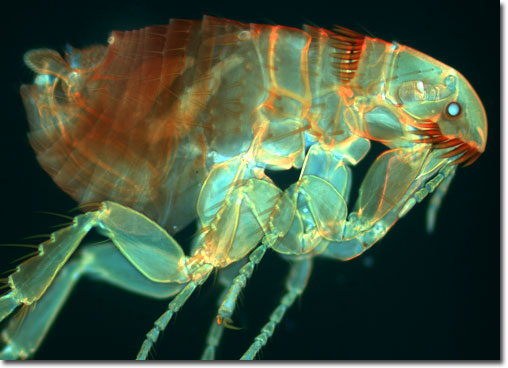|
Adult fleas vary in length from 0.04 to 0.4 inches. They are able to jump over eight inches high, which is roughly the equivalent of a human jumping over the Statue of Liberty. Specialized anatomical structures allow them to attach to the skin of their hosts, but they pass easily from one host to another. Consequently, fleas can transmit a number of diseases. Most notably, the flea is responsible for transmitting the bubonic plague, which killed a quarter of the population of Europe during the Middle Ages. Today the flea is known to transmit tapeworm and haemobartonellosis, a blood disorder that can be fatal to cats. Serious infestations can cause severe inflammation, intense itching and even anemia. Also, a number of pets, as well as people, have allergies to flea saliva that can result in rashes and hair loss.
|
